With our time in Broome coming to an end, it was time to start preparing for the adventure ahead, which was the Gibb River Road.
The 660km four-wheel-drive trek is the best way to explore the natural treasures of the Kimberley.
Originally constructed in the 1960s as a way to transport cattle from Derby to Wyndham, it is now an iconic journey that is on many a bucket list – including mine.
When embarking on any extended adventure, particularly into the remote sections of Australia, it is essential you take enough food and water for your trip.
And a decent recovery or breakdown kit is also crucial.
Yet if you have a catastrophic failure, sometimes the only way out is via an expensive tow truck.
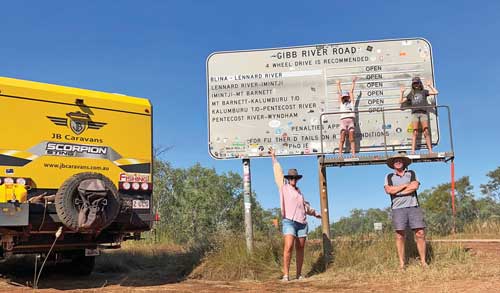
I’m only mildly handy on the mechanical side, so don’t let a lack of this skillset scare you off remote explorations.
I find common sense is possibly the best tool to possess – though make sure to use it wisely.
After ensuring we were well stocked with all the necessities in Broome, a stop in Derby was required before we hit the Gibb.
While we didn’t have an exact itinerary, we planned to spend about 13 days on the Gibb River Road.
Our route was a little loose as well, due to the fact that certain parts of the Gibb weren’t open at the time, so we needed to play it a little by ear.
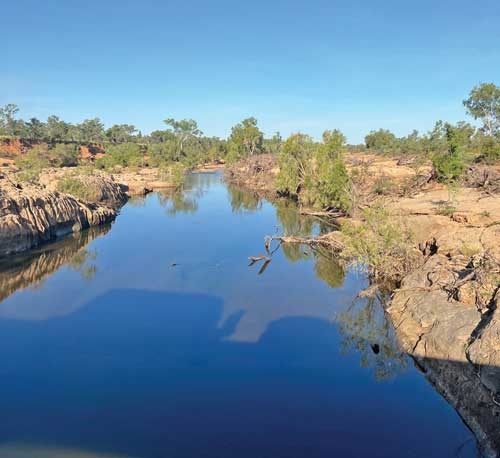
As we embarked on the trip and took the obligatory tourist picture for the start of the Gibb, I wasn’t entirely sure of what I expected out of this next adventure.
The last time I was in this neck of the woods, I went the ‘easier’ way, between Kununurra and Derby on the Great Northern Hwy.
Admittedly, this was over 25 years ago and I was in an old Holden HX panel van, so things were a little different.
Like most avid travellers, we ticked off a few of the key spots we wanted to see, and allowed enough time for staying a little longer if we chose to or so we could take our time.
As the road conditions were mostly unknown, we had prepared for the worst and hoped for the best.
Thankfully the start of our trek east was relatively easy, with only mild corrugations.
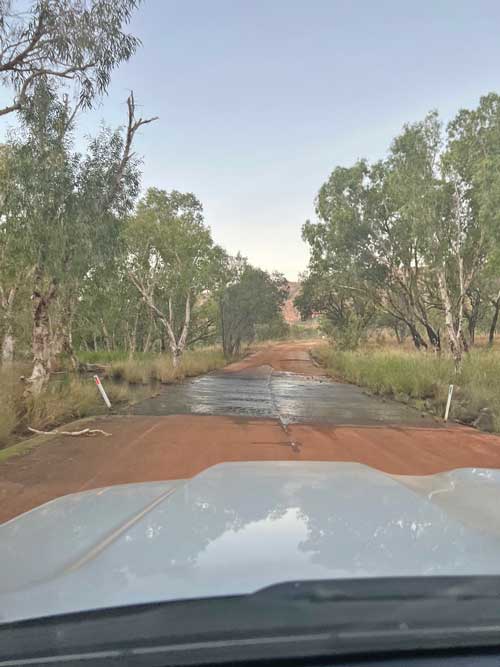
When driving on corrugations, you need to find a speed that works for your vehicle, caravan and occupants in the car, and your driving skill level.
Sometimes this might mean going a little quicker to get over the corrugations, so you and the rest of your gear is not pounded to pieces.
Conversely, some sections – especially the little rutted-out creek crossings – might need you to slow down to a crawl.
Whatever you are comfortable with is fine.
However, you do also need to be aware of other travellers who may want to go faster or slower.
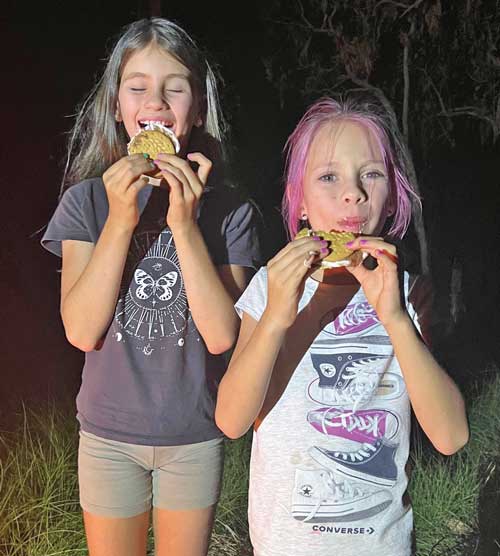
Fortunately we didn’t have any issues while on the Gibb.
In fact, it was a little quieter than expected, which we took as a blessing.
Particularly when we had a whole waterhole to ourselves – simply bliss.
After a reasonably uneventful first day on the Gibb, aside from taking in the breathtaking scenery, we decided to camp slightly off the road near Lennard River.
This was a bush camp – which is on WikiCamps – called March Fly Glen.
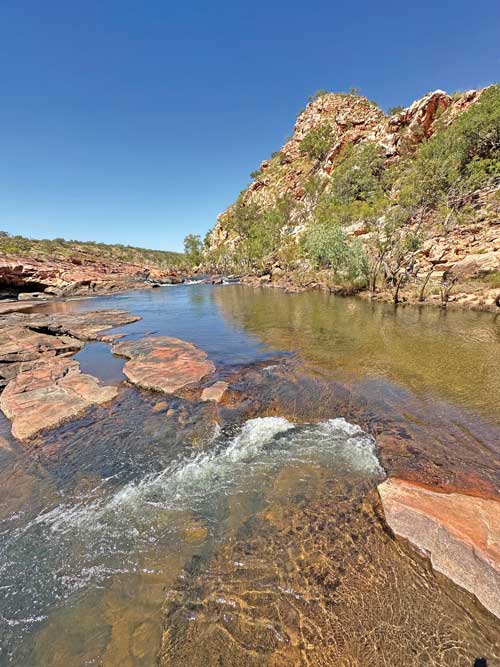
As we were staying for only one night, our setup was very simple – we pulled out the camp chairs and made a fire.
Thankfully our JB Scorpion has airbag suspension, which enables us pull up on relatively flat ground and adjust the airbags so the van is level for sleeping.
This eliminated the need for chocks or having to unhitch which, when you’re at a place only to sleep, makes the set up and pack up that much easier.
Unfortunately, the Dimalurru (Tunnel Creek) National Park section of the Gibb River Rd was closed when we were there, so our first real hands-on experience of the Gibb was going to be Dalmanyi (Bell Gorge).
The closest campsite to Dalmanyi was the Dulundi (Silent Grove) Campground.
Our plan was to spend two nights there so we could enjoy Dalmanyi.
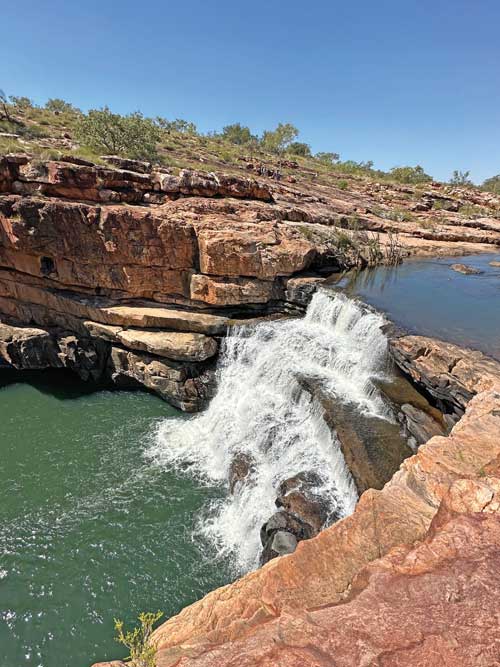
Dalmanyi
Our crew really enjoys bush walking, so the 4km return walk didn’t phase us, even though it was graded level 4, which is hard.
The walking trail meandered through the bush, allowing us to take in the awesome scenery.
We eventually arrived at the top of the falls, where we took in the breathtaking view.
There was also a great spot for a refreshing dip.
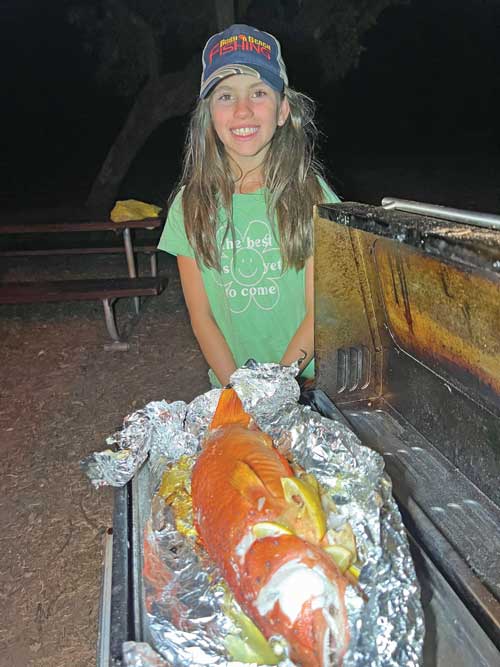
If you’re keen, you can make the grade 5 walk down into Dalmanyi, where you can swim in the deep hole below the falls, which we did.
To do this, you’ll need to walk through the running water, then climb down a steep rocky embankment.
At the end of the descent, you arrive at a huge pool with massive smooth rocky cliffs that have been scoured out in the wet season when the water pumps through – what a spectacular place to cool off.
A one point we had the whole pool to ourselves, which was unreal.
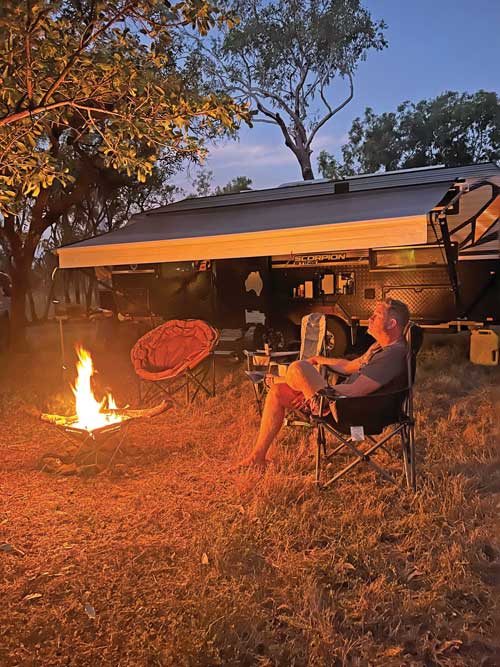
Adcock Gorge
Our next planned stop was Adcock Gorge.
We day tripped here, leaving the van at Dulundi.
It meant a little extra driving but, because you can’t get a van into Adcock Gorge, we would have had to leave it on the side of the road, which we weren’t keen to do.
As mentioned, you need to have a rough plan when heading to remote areas – thankfully we had allowed for extra fuel so we could easily make it to the next fuel stop.
However, if you were getting low on fuel, the Imintji Community Store sells it and various other items.
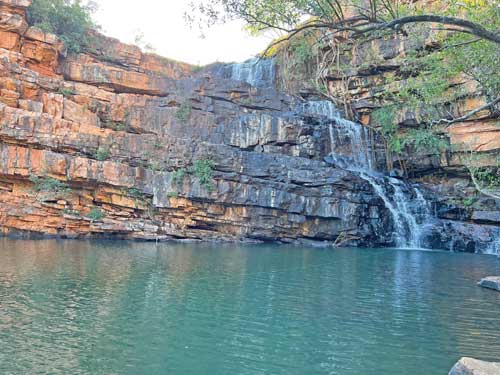
The road into Adcock was rough but doable.
Though we did come across a tour bus that had managed to bog itself in a muddy creek crossing.
We helped for a while, however we had to make the call to continue on so we could get to the gorge and back to camp again before it got too dark.
Thankfully, a crew of about four beasty 4WDs were also making the trek in, so they winched the tour bus out.
Depending on your car and driving ability, the last section of the road can be extremely rough, with a little creek crossing and large boulders to transverse.
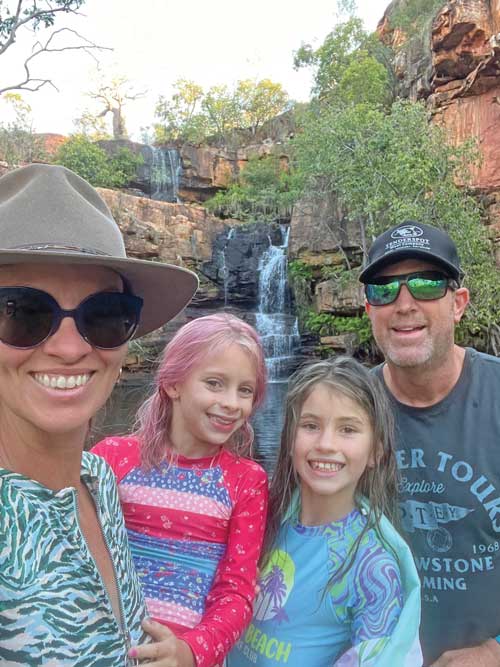
We made it most of the way in before calling it and walking the last section.
As mentioned, common sense is often your best tool to have on board.
Fortunately, my better half has plenty of this, so we stopped before either getting stuck or damaging the car, which would not have been a good outcome.
The walk in was relatively short and before long we were greeted by another waterfall and swimming pool.
The girls and I love swimming in freshwater pools – it’s a bit like diving into the surf, very refreshing and invigorating.
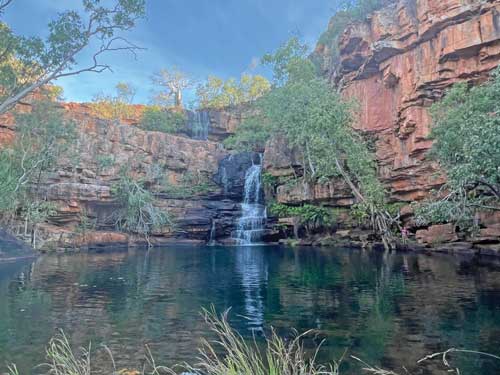
Galvans Gorge
This little gem is only about 1km off the Gibb River Road and is very easily accessible.
The trail in would have to be one of the prettiest walks on the Gibb.
When you arrive at the gorge, it opens up to a multi-tiered waterfall that plunges into a very deep rock pool.
As luck had it, we scored this place to ourselves for a decent amount of time, before the next adventurers arrived.
Galvans is a great place for simply sitting back and relaxing, or you can climb a particular tree and jump from its branches, which is what we did.
As mentioned, the pool was very deep.
As a cautious father, I always check how deep the pools are before we jump in, particularly if we are jumping off trees or rock edges.
Next month, the adventure continues along the Gibb River Road as we make our way east.
 Bush ‘n Beach Fishing Magazine Location reports & tips for fishing, boating, camping, kayaking, 4WDing in Queensland and Northern NSW
Bush ‘n Beach Fishing Magazine Location reports & tips for fishing, boating, camping, kayaking, 4WDing in Queensland and Northern NSW

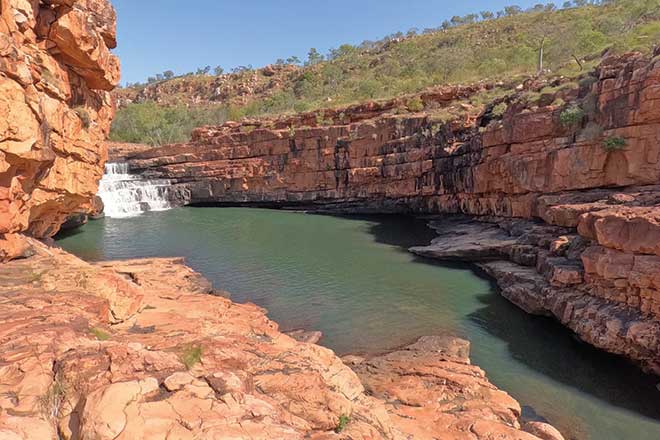




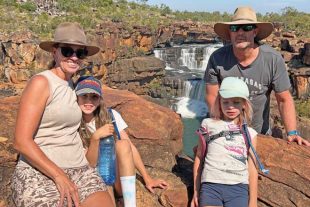
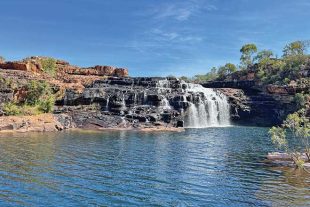

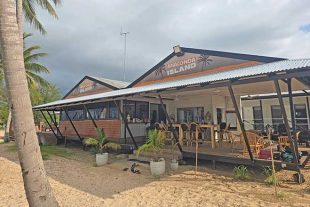
I love your pictures and I love that your hole family goes fishing with you. Its the same with my family we all love fishing together so much fun